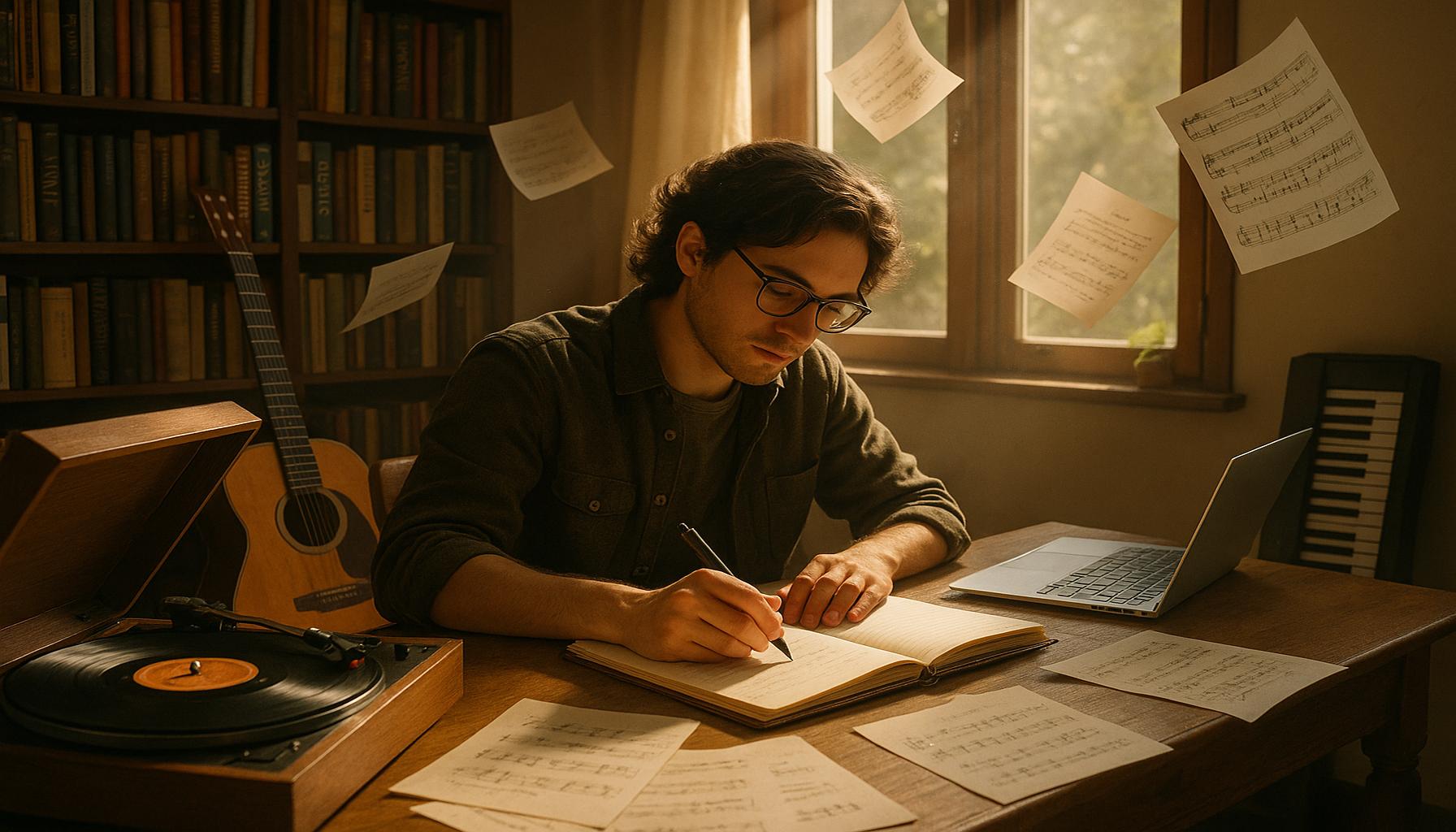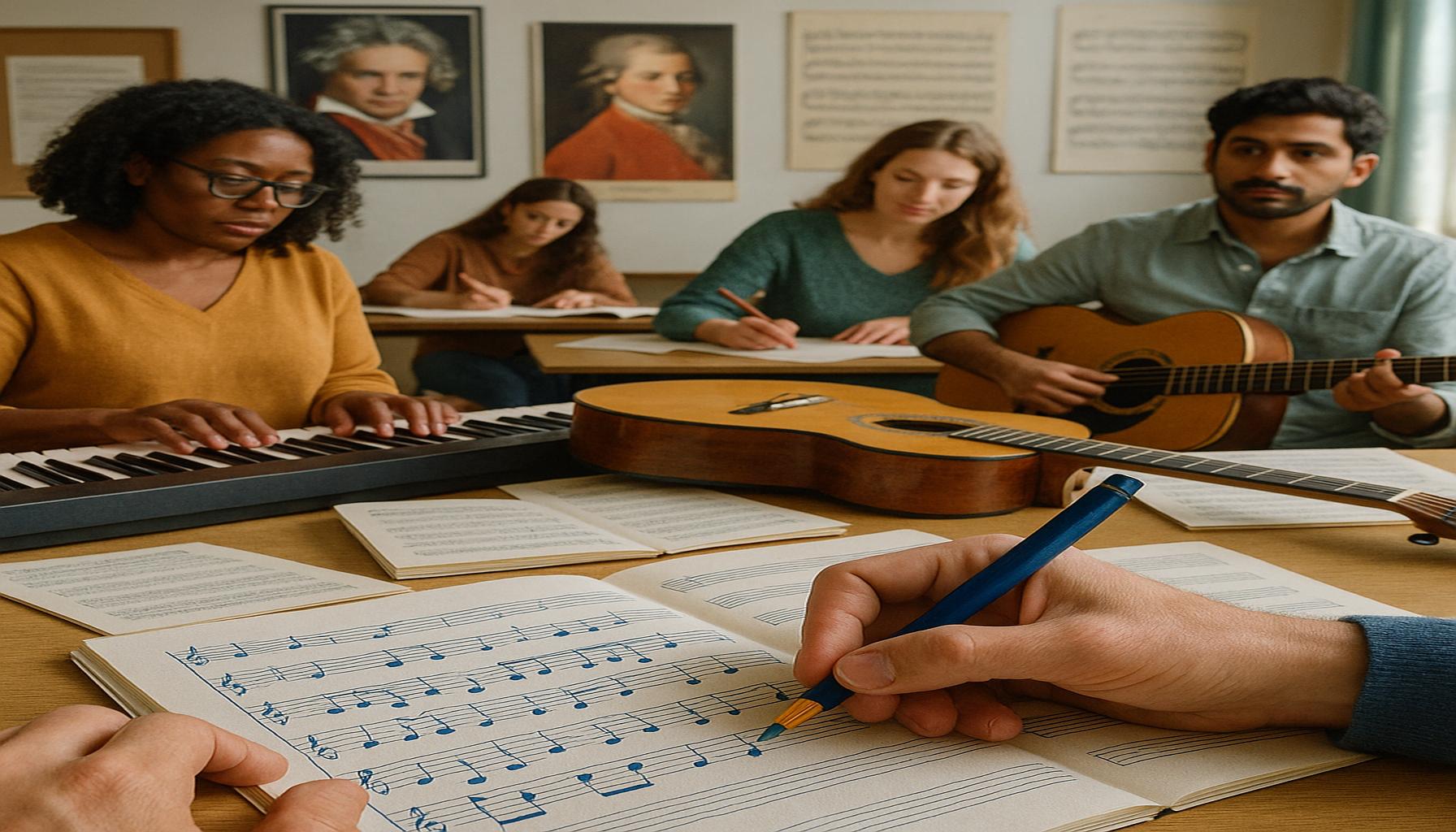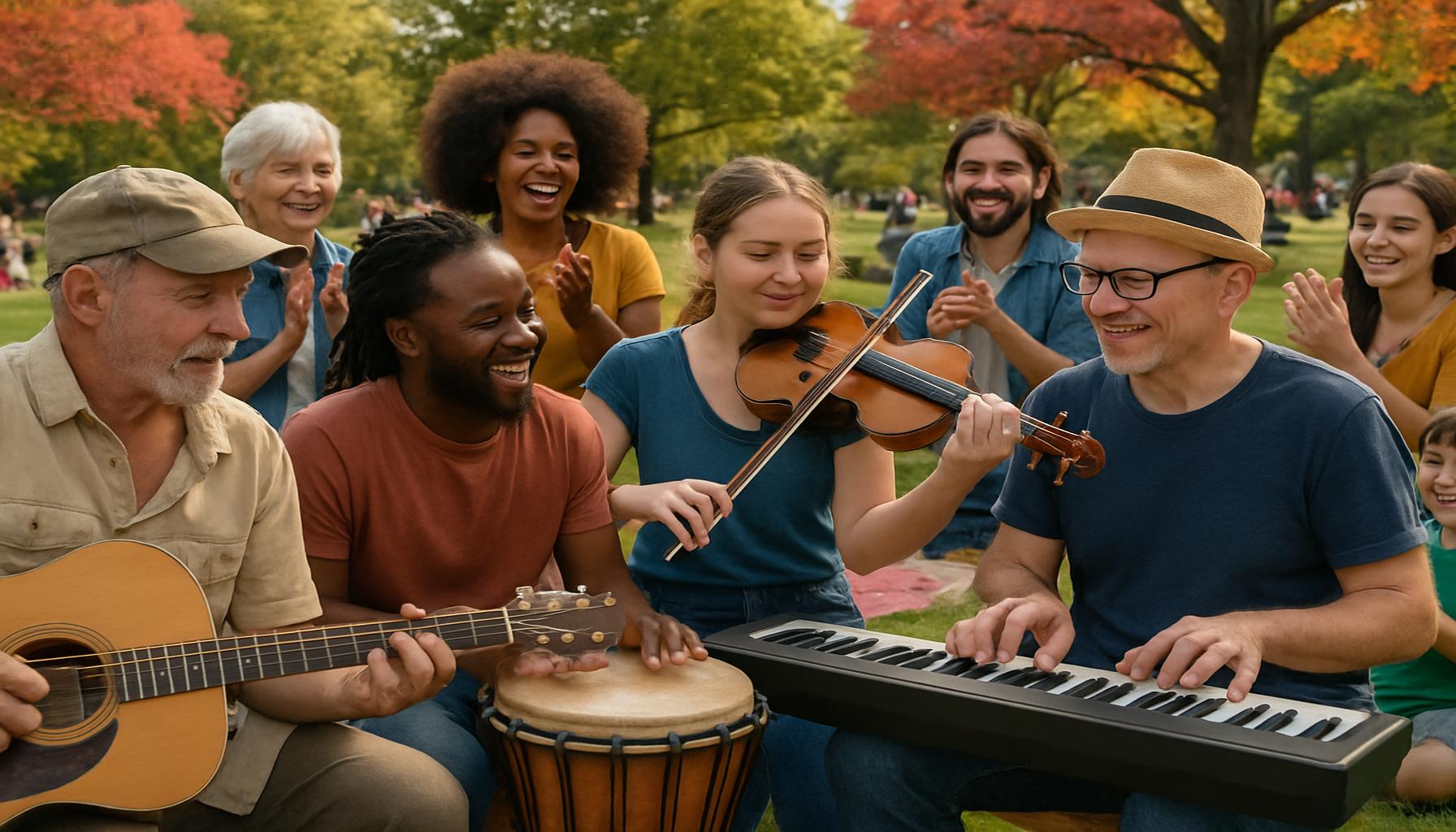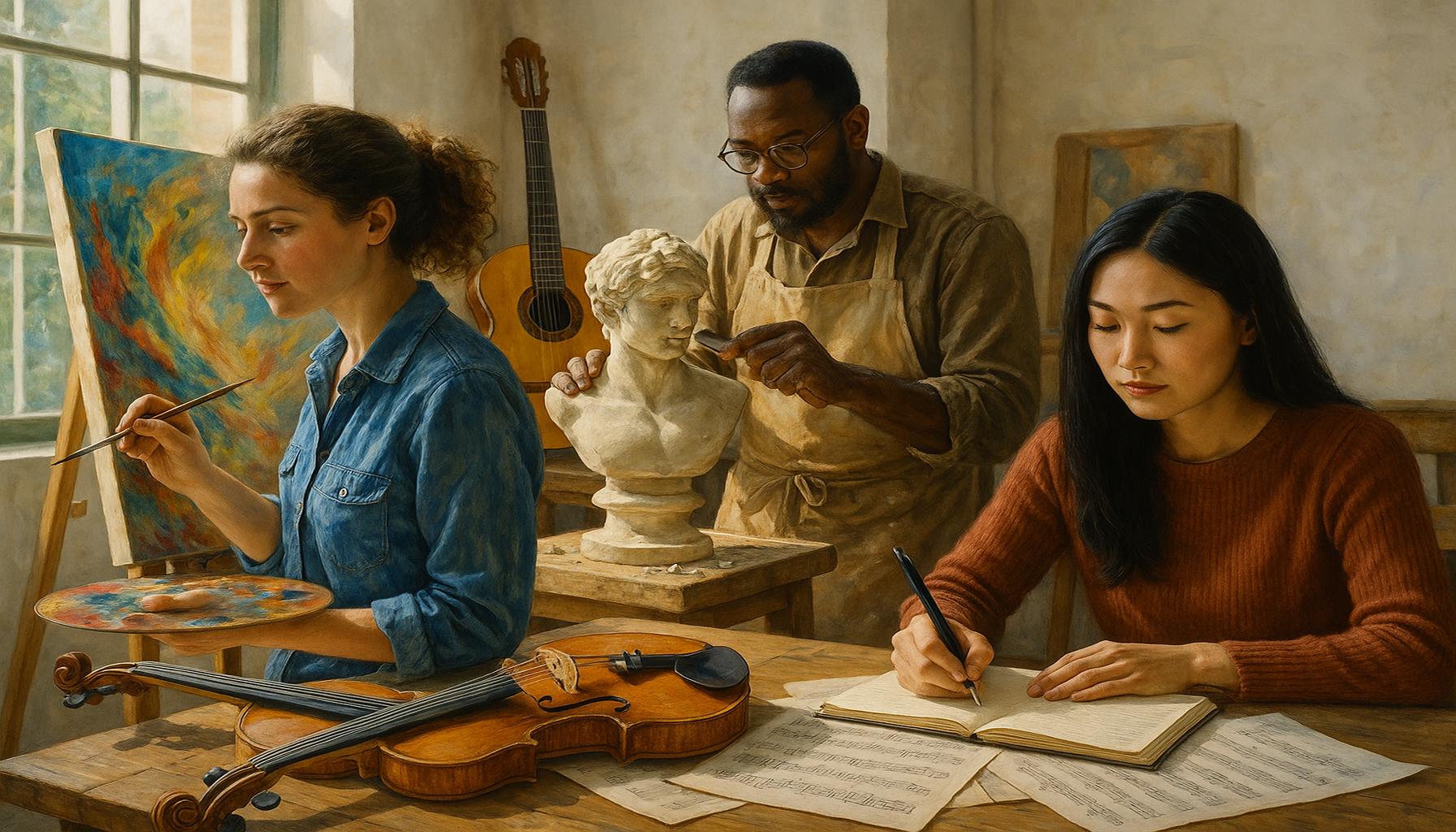The Role of Music in Enhancing Storytelling Techniques for Aspiring Writers

The Role of Music in Storytelling
Music is often regarded as a universal language, resonating with emotions and creating profound connections. For aspiring writers, harnessing the power of music can elevate their storytelling techniques in remarkable ways. From the very beginning of the writing process to the final touches of editing, the influence of music can be both subtle and significant, breathing life into narratives in ways that mere words on a page cannot achieve.
Consider how music influences narratives:
- Setting the Mood: Background scores and melodies can establish a story’s emotional landscape, enveloping the reader in a distinct atmosphere. For instance, a suspenseful thriller might benefit from erratic beats and sharp instrumental stings, reminiscent of the scores by composers like Hans Zimmer or John Williams. Conversely, a romantic tale could be enhanced by soft, melodic lines that evoke a sense of warmth and longing, similar to the heartwarming scores featured in films like “The Notebook.”
- Character Development: Specific songs or musical themes can embody the essence of characters, adding layers to their personalities. Think about the way certain songs resonate with individuals—just as a character may have a defining anthem that reflects their struggles and aspirations, writers can use music to create multidimensional figures. For example, a rebellious protagonist might be associated with punk rock anthems, while a reflective and somber character may be tied to classical or indie tunes.
- Pacing and Tension: The rhythm of music can dictate the tempo of a scene, amplifying suspense or excitement. In fast-paced action scenes, a driving beat can quicken the heart rate of readers, allowing them to feel the adrenaline rush of the moment. Conversely, a slow, haunting piece can draw out tension, prolonging the anticipation of a crucial plot twist. The storytelling techniques employed in contemporary novels often mirror cinematic approaches, integrating musical influences that enhance the reader’s engagement.
As writers strive to engage their readers, implementing music can be transformative. It enhances not just the atmosphere, but also the reader’s journey through the narrative. A writer who incorporates music thoughtfully can tap into shared cultural experiences, creating familiar connections that resonate deeply with their audience. For example, referencing popular music from different eras can evoke nostalgia, bridging generational gaps and enriching the narrative.
By exploring the synergy between music and storytelling, writers can unlock new dimensions in their craft. The intersection offers a rich terrain for inspiration, leading to distinctive and memorable stories that capture the imagination. Authors such as Nick Hornby have adeptly woven music into their narratives, illustrating how songs can become pivotal plot points or emotional touchstones. Crafting a story that integrates music not only entertains but can also provide insight into the rhythms of life itself.
Ultimately, recognizing the role of music in storytelling equips aspiring writers with tools to deepen their narratives. The act of pairing a story with the right musical backdrop can enhance the emotional depth of the characters and plot, making the experience more immersive for readers. Dive into this exploration and discover how melodies and harmonies can elevate your writing, enabling you to create stories that linger long after the last page is turned.
EXPLORE MORE: Click here to dive deeper into the emotional world of musical composition
Enhancing Narrative Through Musical Elements
For aspiring writers, understanding how to effectively integrate music into storytelling can offer a pathway to more nuanced and layered narratives. Music does not merely act as a background element; it becomes a vital partner in the storytelling process, influencing not only the atmosphere but also the thematic depth of a piece. Writers can harness this synergy by considering several aspects of music’s role in enriching their narratives.
Emotion and Connection: One of the most immediate influences of music in storytelling is its ability to evoke emotions. The right soundtrack or musical reference can stir powerful feelings within readers and draw them deeper into the narrative. Imagine a scene of heartbreak: the inclusion of a melancholy ballad could amplify the emotional pain of a character, solidifying their experiences in the reader’s mind. Songs that resonate with universal themes of love, loss, and hope can forge stronger connections between characters and readers alike.
To effectively utilize music’s emotional potency, aspiring writers can experiment with the following techniques:
- Character Themes: Assign specific songs to different characters, establishing unique musical identities. For instance, a character reflecting on their past may be associated with an older classic, while a young, optimistic protagonist could resonate with contemporary pop hits.
- Scene Soundtracks: Create playlists for various scenes or chapters. This method allows the writer to maintain a consistency in tone and emotional resonance throughout the story, ensuring that the character’s journey feels seamless.
- Lyric Integration: Utilize snippets of lyrics within dialogues or character reflections. This can enhance character development while making the narrative feel more grounded in cultural realities that readers can relate to.
Thematic Resonance: Beyond emotional connections, music can reinforce key themes present in the narrative. A story grappling with themes of resistance and struggle can be beautifully expanded through protest songs or anthems of change—acts that not only resonate with the reader but also provide cultural context. Writers like Jerry Spinelli have effectively weaved music into their plots, allowing characters to reflect societal movements or personal transformations through well-chosen musical references.
As aspiring writers navigate the terrene of modern storytelling, they must consider how music can create a stronger narrative cohesion. The integration of music serves as a celebratory tool that can evoke nostalgia, highlight contrasts between characters, or even frame setting elements that drive the story forward. For example, a scene set in a nostalgic diner might invoke the sounds of 1950s rock and roll, instantly transporting readers to a different time and place. This hallmark of storytelling not only enriches the reading experience but also invites readers to reflect on their own lives and memories.
Recognizing the integral role of music in storytelling arms writers with an added layer of sophistication. By harnessing the emotional, thematic, and cultural ramifications of music, they can create immersive narratives that resonate with broader audiences. As aspiring writers delve into the world of storytelling, music offers them a distinctive lens through which to craft and refine their tales, ensuring that their stories leave a lasting impression long after the final word is read.
The Impact of Music on Emotional Engagement
One of the most compelling aspects of music is its unparalleled ability to evoke emotions. For aspiring writers, understanding how to harness this power can significantly enhance narrative depth. By carefully selecting musical themes that resonate with characters and plot dynamics, writers can create an immersive atmosphere that engages readers on a deeper level. For instance, a suspenseful scene paired with a tense musical score not only heightens anticipation but also amplifies reader investment in the story. Moreover, the use of motifs or recurring musical themes can mirror character development. Just as music can signify the emotional state of a character, it can also foreshadow future events. Writers such as John Williams, who integrated specific musical cues into film compositions, demonstrate how powerful this synergy can be, transforming narratives through auditory experience. Incorporating music can also serve as a tool in world-building. A well-crafted soundtrack can transport readers to different settings, offering a sensory experience that enhances the vividness of the story landscape. Imagine a historical novel enriched by the sounds of its era; the music not only complements the visuals but deepens the reader’s connection to the time period. In this ever-evolving landscape of storytelling, aspiring writers have a unique opportunity to experiment with these techniques, paving the way for innovative narratives that resonate with audiences.
DISCOVER MORE: Click here to learn how music can elevate your mental health
Building Atmosphere and Setting Through Sound
The interplay between music and narrative extends beyond emotional engagement and thematic development; it plays a critical role in establishing the atmosphere and setting of a story. A well-chosen musical backdrop can transport readers instantly, filling their minds with vivid imagery and sensory detail. Aspiring writers can leverage this aspect of music to create a multi-dimensional reading experience that resonates long after the final page is turned.
Soundscapes and Imagery: One effective way to utilize music in storytelling is through the creation of soundscapes. Just as a film score enhances the visual experience, a writer’s descriptive language can be paired with musical references to create auditory imagery that complements the narrative. For instance, a scene portraying a bustling urban environment can evoke the energetic beats of hip-hop, while a serene countryside setting might resonate with soothing acoustic melodies. Such soundscapes can enrich readers’ experiences, offering them a more immersive feel of the world you’ve crafted.
When constructing this kind of atmospheric soundscape, aspiring writers may find it helpful to:
- Descriptions of Sound: Incorporate sound descriptions into the narrative. Discuss the music the characters listen to or the background sounds of their environment, enabling readers to ‘hear’ the scene as they read.
- Musical Metaphors: Use musical elements as metaphors for moments in the story. For example, a character’s rise from struggle to triumph can be likened to a crescendo in a symphony, effectively conveying a transformation without lengthy exposition.
- Contrasting Sounds: Employ contrasting musical styles to highlight tension or conflict within scenes. A tense standoff could be set against ominous, slow orchestral music, while a moment of reconciliation might be scored with light, uplifting melodies.
Character Development and Growth: Music serves as a powerful tool for character development, shaping not only how characters perceive the world but also how they evolve throughout the narrative. A character’s musical tastes can provide insight into their personality, background, and even their aspirations. By embedding music into a character’s journey, writers can showcase personal growth or internal conflict in a relatable manner.
For instance, a character who transitions from a phase of rebellion, represented by punk rock influences, to a more reflective state lined with classical compositions reveals their maturation process. Such musical arcs can be fleshed out by:
- Character Playlists: Encourage characters to create or curate playlists that reflect their journey, allowing readers to explore their emotional evolution through the music they cherish.
- Musical Mentors: Introduce secondary characters who influence the protagonist’s musical development, providing insightful relationships that enhance the main character’s depth.
- Symbolic Instruments: Use specific instruments associated with characters to symbolize growth. For example, a character who starts with loud, brash electric guitar playing might end up mastering a more subtle and nuanced instrument like the violin, illustrating their growth toward introspection.
Cultural Context and Identity: In the diverse tapestry of American culture, music holds profound significance for expressing identity and heritage. Aspiring writers can tap into music’s cultural roots to enrich their characters’ backgrounds and the world-building in their stories. From jazz and blues to hip-hop and folk, each genre carries a unique narrative history that can lend authenticity and relativity to your storytelling.
By embedding cultural music references in narratives, writers honor the experiences of different communities, driving home the importance of inclusivity in literature. For instance, characters might engage in a family ritual of playing traditional music during celebrations, signaling the importance of their heritage and identity. This technique not only enriches the characters but also invites readers to connect with the cultural strands woven into the story.
In summary, the use of music in storytelling is a powerful means of enhancing atmosphere, character depth, and cultural context, establishing a rich narrative tapestry for the reader. As aspiring writers explore these avenues, they can create layered, engaging stories that resonate deeply across diverse audiences.
DIVE DEEPER: Click here to discover the therapeutic effects of art
Conclusion: The Harmonious Blend of Music and Narrative
In closing, the role of music in enhancing storytelling techniques for aspiring writers cannot be overstated. As we have explored, music serves as more than just a backdrop; it is a multifaceted tool that enriches narrative depth, influences character development, and adds layers of cultural nuance. By incorporating the principles of soundscapes, musical metaphors, and character-driven playlists, writers can transform their storytelling into an immersive experience, allowing readers to feel as if they are not just passive observers but active participants in the journey.
Moreover, leveraging music to reflect cultural contexts and identities can lead to more relatable and authentic characters, resonating powerfully within diverse audiences. The stories told through the fusion of evocative music and compelling narrative structures not only entertain but also foster a deeper understanding of varied human experiences.
As aspiring writers embark on their creative journeys, it is essential to recognize the potential that music holds in crafting compelling narratives. By exploring different genres, understanding the emotional weight of sound, and reflecting on the cultural dimensions of music, writers can create richer, more engaging stories that leave a lasting impression. Ultimately, the harmonious blend of music and narrative offers a gateway to a vibrant storytelling landscape that invites exploration, connection, and a profound appreciation for the art of writing. So, turn up the volume on your creative process, and let music guide your storytelling adventures!


